Want to be in the loop?
subscribe to
our notification
Business News
VIETNAM IMPORTS US$6.6 BILLION IN TEXTILE-GARMENT MATERIALS IN H1
Though the Comprehensive and Progressive Agreement for Trans-Pacific Partnership (CPTPP) has been in force for a while, Vietnam has not made much use of the free trade agreement and imported US$6.7 billion worth of materials in the first half of the year.
One central issue to benefit from the deal is finding ways to meet the yarn forward rule of origin, said Truong Van Cam, general secretary of the Vietnam Textile and Apparel Association (VITAS).
The textile and garment industry imported US$12.7 billion worth of fabric last year and some US$6.7 billion in January-June of this year. As VITAS data showed, materials are mainly imported from non-members of the free trade agreements Vietnam has signed, with 55% from China, 20% from South Korea, 16% from Taiwan and 5% from Japan
The CPTPP, which took effect last January, and the EU-Vietnam Free Trade Agreement (EVFTA), which was signed last June, are expected to allow Vietnamese products to approach a market with a billion consumers, which makes up around 40% of global gross domestic product.
Peru, Mexico and Canada are among the CPTPP countries that have no free trade agreements with Vietnam. Given this, Vietnam’s textile and garment exports to Canada have brought US$700-800 million, only trailing Japan.
These two agreements feature fast and deep tax cuts. Vietnam’s textile and garment products are currently taxed 9.6% on average when exported to the European Union. The duties for exports to the CPTPP bloc are varied and depend on the market: 17% to Peru and 20%-35% to Mexico. Both trade deals will soon contribute to cutting tariffs to zero.
Almost all textile and garment products will not be subject to tariffs. The European Union has created a road map for rapid tariff cuts, where over 85% of tariff lines will be cut instantly to 0% and almost 100% of tariff lines will be cut seven years later.
As for the CPTPP, the tax cut road map is longer, reaching up to 16 years in certain markets such as Mexico and Peru as these markets have production and export structures similar to those in Vietnam.
Opportunities will remain undertapped if Vietnam fails to resolve the yarn-forward issue. Clothing brands have their own supply chains, whereas domestic firms have not been able to deeply integrate with these chains and have mainly focused on outsourcing, a stage with the lowest added value of the entire chain. The problems dogging the yarn-forward rule of origin are not easy to resolve, especially if brands keep using materials from partners outside the CPTPP and EVFTA.
Materials from Vietnam are usually 10% higher priced than similar materials from China, noted Ron Dutta of Garan Incorporated, a company with 10 years of operations in Vietnam. He added that Vietnam’s material sources are limited to mostly cotton, and local labor costs are no longer cheap.
China, the supplier of more than half of the materials used by Vietnam, produces materials on a large scale, hence its competitive prices. However, China is not a party to either of the two new-generation trade deals that Vietnam has signed. Vietnam and China are now only members of the ASEAN-China Free Trade Agreement, which became valid in 2010, and the Regional Comprehensive Economic Partnership, which is under negotiation.
According to the VITAS representative, the benefits of the CPTPP and the EVFTA are expected to convince brands to seek local suppliers instead of foreign ones. If the yarn-forward rule is not met, Vietnam’s products will be taxed up to 25%.
However, support from the authorities is essential. The Ministry of Industry and Trade is formulating a textile and garment development strategy, which is expected to be issued this year. If the strategy is approved, large industrial parks will be developed to attract projects to solve the problems of the industry.
“We have high hopes for this strategy,” Cam said.
VITAS hopes that once the textile and garment industrial parks, measuring 400-500 hectares, are built, they will attract projects for fiber, weaving and dyeing. Each industrial park can provide at least one billion meters of fabric per year.
Nonetheless, the construction of industrial parks designated for textile and garment projects to solve environment-related problems is not an easy task in the context of limited land resources.
Source: The Saigon Times
Related News
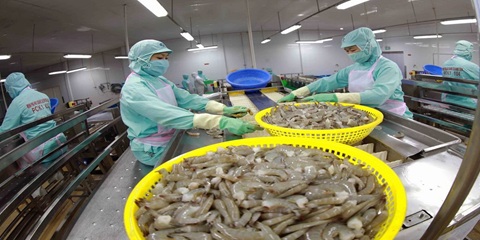
VIETNAM’S SEAFOOD EXPORTS HIT OVER US$10 BILLION IN JAN-NOV
Seafood export revenue in November alone amounted to nearly US$990 million, up 6.6% year-on-year. Key product groups posted solid gains. Shrimp exports rose 11.7% to over US$385 million, supported by strong demand for whiteleg shrimp and lobster. Tra fish shipments increased 9.7% to almost US$197 million, while marine fish, squid, and mollusk exports maintained their recovery.
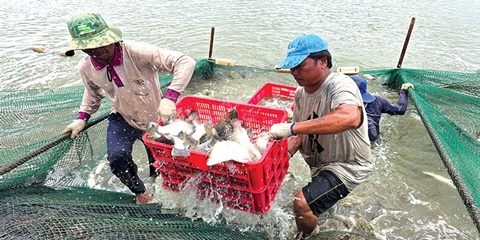
VIETNAM’S AGRO-FORESTRY-FISHERY EXPORTS HIT NEW RECORD IN JAN-NOV
Vietnam’s agro-forestry-fishery export revenue reached an estimated US$64.01 billion in the first 11 months of 2025, up 12.6% year-on-year and surpassing the full-year record of US$62.4 billion set in 2024. Agricultural exports reached US$34.24 billion, up 15% year-on-year, while livestock products brought in US$567.4 million, a 16.8% increase. Seafood exports rose 13.2% to US$10.38 billion, and forestry products earned US$16.61 billion, up 5.9%.

HANOI REPORTS RECORD-HIGH BUDGET REVENUE IN 2025
Hanoi’s budget revenue is estimated to reach VND641.7 trillion in 2025, the highest level ever recorded and nearly 25% above the revised target, according to a report by the municipal government. Data from the city’s socioeconomic performance review shows that total state budget collections in 2025 are projected to reach 124.9% of the adjusted plan and rise 24.9% from 2024, the Vietnam News Agency reported.
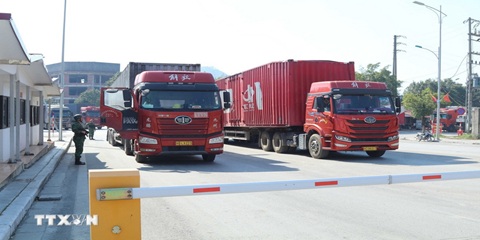
VIETNAM, CHINA TO PILOT TWO-WAY CARGO TRANSPORT AT LANG SON BORDER
Vietnam and China will launch a one-year pilot program on December 10 to allow two-way cargo transport through the Huu Nghi–Youyi Guan international border gates in Lang Son Province, reported the Vietnam News Agency. The Dong Dang-Lang Son Economic Zone Management Board said the trial aims to reduce transport costs and improve customs clearance capacity.
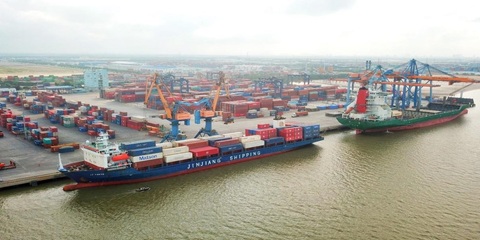
VIETNAM’S IMPORT-EXPORT VALUE NEARS US$840 BILLION IN JAN-NOV
The total value of Vietnam’s imports and exports was nearly US$840 billion between January and November this year, the highest level ever recorded, according to the National Statistics Office. In its latest report on the country’s socio-economic performance, the National Statistics Office highlighted a series of positive economic indicators, with trade emerging as one of the strongest drivers of growth.
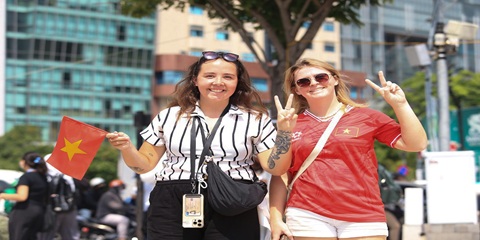
OVER 19 MILLION INTERNATIONAL VISITORS COME TO VIETNAM IN JAN-NOV
Vietnam received more than 19.1 million international visitors in the first 11 months of 2025, a 20.9% increase year-on-year and the highest level ever recorded, according to the National Statistics Office. The figure surpasses the full-year record of 18 million arrivals set in 2019, before the Covid-19 pandemic. Nearly two million foreign visitors arrived in November alone, up 14.2% from October and 15.6% from the same period last year.
























